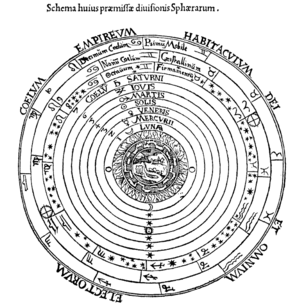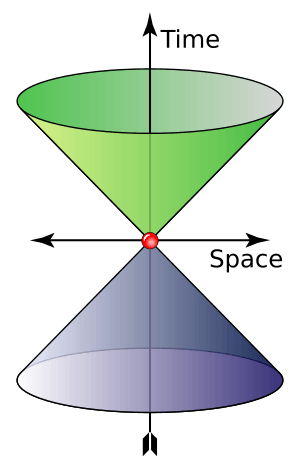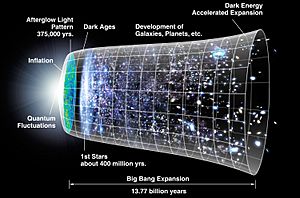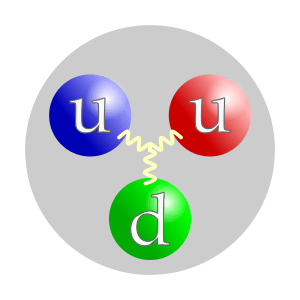A Brief History of Time facts for kids
| Author | Stephen Hawking |
|---|---|
| Genre | Cosmology |
| Publisher | Bantam Books |
|
Publication date
|
1988 |
|
Published in English
|
1988 |
| Followed by | The Illustrated A Brief History of Time |
A Brief History of Time is a famous book written in 1988 by the amazing scientist Stephen Hawking. This book is all about cosmology, which is the study of the entire universe. It explores how the universe began and how it works.
There are two other versions of this book. One is called The Illustrated A Brief History of Time. It has many pictures to help explain the ideas. This version was also updated with new information. The other version is A Briefer History of Time. It is shorter than the first book and also includes updates.
This book became very popular around the world. It was even on the London Sunday Times bestseller list for more than four years!
Contents
Exploring the Universe with Stephen Hawking
In A Brief History of Time, Stephen Hawking talks about many big ideas in physics. He covers the history of physics and important concepts like gravity. He also explains how light travels through space. You will learn about space-time and tiny particles. These are the very small pieces that make up everything. The book also discusses black holes and the Big Bang. The Big Bang is the idea that the universe started from a single point. Hawking even touches on the fascinating idea of time travel.
The book starts by looking at the history of physics. Hawking shares ideas from old thinkers like Aristotle and Ptolemy. Aristotle believed the Earth was round, which was unusual for his time. However, he also thought the sun and stars moved around the Earth. Ptolemy created a model to show this idea.
Today, we know the Earth actually goes around the sun. This idea was first suggested by Nicholas Copernicus. Scientists like Galileo Galilei and Johannes Kepler later proved Copernicus right. They studied how the moons of other planets moved. Isaac Newton also wrote about gravity, which further supported Copernicus's view.
Understanding Space and Time
Hawking explains how planets orbit the sun and how gravity works between them. He also talks about old ideas like "absolute rest" and "absolute position." These ideas suggested that events stayed in one fixed place over time. However, Newton's laws of gravity showed this wasn't quite right. The idea of absolute rest didn't work when objects moved extremely fast, like at the speed of light.
The speed of light was first measured in 1676 by Ole Christensen Roemer. Light travels incredibly fast, but it does have a limited speed. Scientists faced a puzzle trying to explain why light always travels at the same speed. They even came up with a new idea called the "ether" to try and explain it.
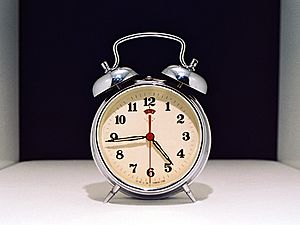
Then, Albert Einstein came along. He said we didn't need the "ether" if we let go of the idea of "absolute time." Absolute time means time that is always the same for everyone. Einstein's big idea is called the theory of relativity.
Hawking also explains light using "light cones." The top of a light cone shows where light from an event will go in the future. The bottom shows where the light came from in the past. The middle of the cone is the event itself. Hawking also describes how light can bend. When light passes a huge mass, like a star, it slightly changes direction towards that mass.
Einstein's theory of relativity also predicts how time changes. It says that time slows down when something is near huge masses. But when something is farther away, time goes by faster. Hawking uses the example of two twins to explain this. If one twin lived on a mountain and the other by the sea, the twin on the mountain would age a tiny bit faster.
The Universe is Growing!
Hawking discusses the expanding universe. This means the universe is constantly getting bigger. He uses the Doppler shift to explain this. The Doppler shift happens when something moves toward or away from you.
There are two types of Doppler shift: red shifting and blue shifting.
- Red shifting happens when something is moving away from us. The light waves get stretched out, making them look redder. This is a key clue that the universe is expanding.
- Blue shifting happens when something is moving toward us. The light waves get squished, making them look bluer.
A scientist named Edwin Hubble discovered that many stars are red shifted. This showed they are moving away from us. Hawking uses this to explain that the universe is indeed getting bigger. The universe is believed to have started with a massive Big Bang. This was a huge explosion that created everything.
The Uncertainty Principle
The uncertainty principle is a cool idea in physics. It says you cannot know both the exact speed and the exact position of a tiny particle at the same time. To find a particle's position, scientists shine light on it. If they use high-frequency light, they can find the position accurately. But this light will change the particle's speed, so its speed becomes unknown. If they use lower-frequency light, they can find the speed better, but the particle's position will be unknown. The uncertainty principle showed that we can't predict everything in the future perfectly.
This chapter also talks more about how light behaves. Some theories say light acts like particles, even though it's made of waves. One such idea is Planck's quantum hypothesis. Another theory, Heisenberg's uncertainty principle, also suggests that light waves can act like particles.
Light waves have high points called crests and low points called troughs. Sometimes, more than one wave can interfere with each other. This happens when their crests and troughs line up. This is called light interference. When light waves interfere, they can create many beautiful colors. You can see this effect in soap bubbles!
Tiny Particles and Nature's Forces
Quarks are incredibly small things that make up all the matter we see. There are six different "flavors" of quarks: up, down, strange, charmed, bottom, and top. Quarks also have three "colors": red, green, and blue. There are also anti-quarks, which are the opposite of regular quarks. Quarks are known as the "building blocks of matter" because they are the smallest things that make up everything in the universe.
All elementary particles (like quarks) have something called spin. A particle's spin tells us how it looks from different directions. For example, a particle with spin 0 looks the same no matter how you turn it. A particle with spin 1 looks different unless you spin it all the way around (360 degrees). Hawking uses an arrow as an example for spin 1. A particle with spin 2 needs to be turned halfway (180 degrees) to look the same. The book uses a double-headed arrow as an example.
There are two main groups of particles: those with a spin of 1/2, and those with a spin of 0, 1, or 2. All these particles follow Pauli's exclusion principle. This principle says that two particles cannot be in the exact same place or have the exact same speed. If this principle didn't exist, everything in the universe would be a uniform, dense "soup."
Particles with a spin of 0, 1, or 2 carry forces from one particle to another. For example, virtual gravitons have a spin of 2. They represent the force of gravity. This means that when gravity affects two things, gravitons move between them. Virtual photons have a spin of 1. They represent electromagnetic forces, which hold atoms together.
Besides gravity and electromagnetic forces, there are also weak and strong nuclear forces.
- Weak nuclear forces cause radioactivity. This is when matter gives off energy. Weak nuclear force acts on particles with a spin of 1/2.
- Strong nuclear forces are what hold quarks together inside protons and neutrons. They also keep protons and neutrons together in an atom. The particle that carries the strong nuclear force is called a gluon. Gluons have a spin of 1. They hold quarks together to form protons and neutrons. However, gluons only hold quarks together if they are three different "colors." This makes the final particle have no "color." This is called confinement.
Some scientists have tried to create a single theory that combines the electromagnetic force, the weak nuclear force, and the strong nuclear force. This idea is called a grand unified theory (or GUT). It aims to explain all these forces in one big, unified way.
The Mystery of Black Holes
Black holes are stars that have collapsed into an incredibly small point. This point is called a singularity. This singularity is a point in space-time that spins very fast. That's why black holes don't seem to have time in the usual way. Black holes pull things into their center because their gravity is super strong. They can even suck in light and other stars!
Only very large stars, called super-giants, are big enough to become black holes. A star must be at least one and a half times the mass of our sun to turn into a black hole. This special number is called the Chandrasekhar limit. If a star's mass is less than this limit, it won't become a black hole. Instead, it will turn into a different, smaller type of star. The edge of a black hole is called the event horizon. If something crosses the event horizon, it can never escape the black hole.
Black holes can have different shapes. Some are perfectly spherical, like a ball. Others bulge in the middle. Black holes that don't spin are spherical. Black holes that do spin will bulge in the middle.
It's hard to find black holes because they don't let out any light. But we can find them when they pull in other stars. When a black hole sucks in a star, it lets out X-rays. We can see these X-rays with telescopes. Hawking even talks about a bet he made with another scientist, Kip Thorne. Hawking bet that black holes didn't exist. He later lost the bet!
Hawking realized that the event horizon of a black hole can only get bigger, not smaller. The area of a black hole's event horizon grows whenever something falls into it. He also found that when two black holes combine, the new event horizon is always bigger than or equal to the sum of the two original event horizons. This means a black hole's event horizon can never shrink.
Entropy, which means disorder, is connected to black holes. There's a scientific law called the second law of thermodynamics. It says that entropy (disorder) will always increase in a closed system, like the universe. A student named Jacob Bekenstein first thought about the link between a black hole's entropy and the size of its event horizon. Hawking later proved this. His calculations showed that black holes actually give off radiation. This was surprising because it was thought that nothing could escape a black hole's event horizon.
This puzzle was solved with the idea of "virtual particles." These particles appear in pairs. One particle from the pair might fall into the black hole, while the other escapes. This would make it look like the black hole is emitting particles. This idea seemed strange at first, but many scientists eventually accepted it.
How the Universe Began and What's Next
Most scientists believe the universe started with a huge explosion called the Big Bang. This is known as the "hot big bang model." As the universe expands, everything inside it gets cooler. When the universe first began, it was incredibly hot. As it cooled, things inside the universe started to clump together.
Hawking also talks about how the universe could have been different. For example, if the universe formed and then collapsed too quickly, there wouldn't be enough time for life to appear. Another idea is a universe that expanded too fast. If that happened, it would become almost empty. The idea that there might be many universes is called the many-worlds interpretation.
The book also discusses "inflationary models." These are ideas about how the early universe expanded very rapidly. Finally, Hawking talks about the search for a theory that combines quantum mechanics (the science of very small things) and gravity.
Every particle has many possible histories. This idea comes from Feynman's theory of "sum over histories." A theory that combines quantum mechanics and gravity should include this idea. To find the chance that a particle will pass through a certain point, you need to add up the "waves" of each particle. These waves happen in imaginary time. Imaginary numbers, when multiplied by themselves, result in a negative number. For example, 2i multiplied by 2i equals -4.
Other Editions of the Book
- 1988 — The first edition was published. It had an introduction written by Carl Sagan.
- 1990 — Similar to the 1996 version but with Carl Sagan's introduction, uncolored pictures, and it was a paperback book.
- 1996 — An illustrated, updated, and expanded edition was published. It was called The Illustrated A Brief History of Time. This hardcover book had full-color pictures and photos to help explain the text. It also included new topics not in the original book, like a chapter on wormholes and time travel.
- 1998 — The Tenth Anniversary Edition was released. It had the same text as the 1996 version but was also available in paperback and had fewer diagrams.
- 2005 — A Briefer History of Time was released. Stephen Hawking wrote this shorter version with Leonard Mlodinow. It was updated again to include new scientific discoveries.
ISBN: 0-553-10374-1
Images for kids
-
Ptolemy's Earth-centric model about the location of the planets, stars, and Sun
See also
 In Spanish: Breve historia del tiempo para niños
In Spanish: Breve historia del tiempo para niños


